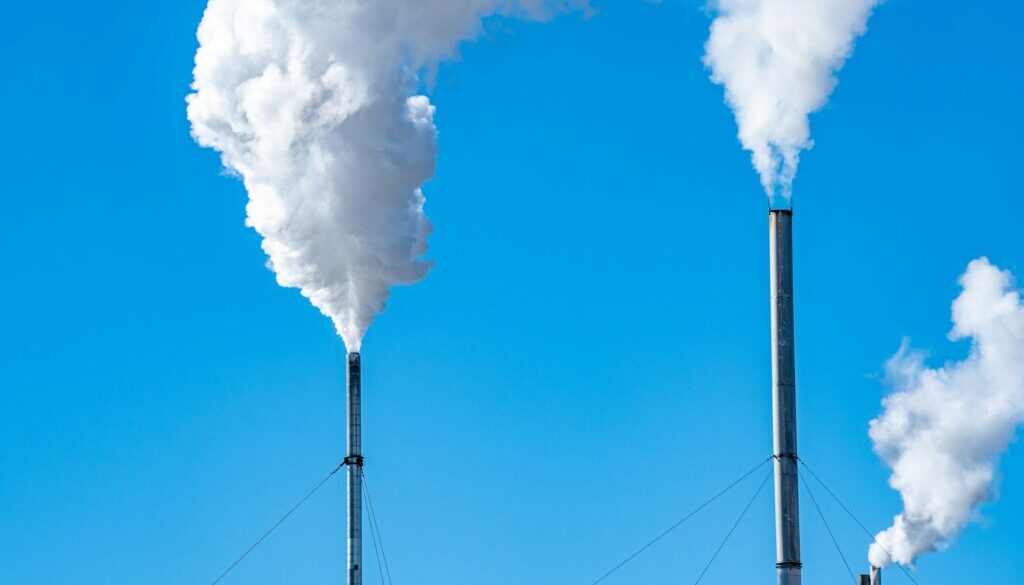Over 50 million Americans lack access to federal air quality data, study reveals
More than half of US counties lack a single federally monitored station for keeping tabs on air quality, meaning more than 50 million Americans (about 15% of the population) live in “air quality monitoring deserts” that lack crucial data for protecting people from harmful pollutants, according to new research.
The findings come as environmental and public health advocates grow increasingly concerned about how recent Trump administration actions will impact air quality and the availability of data and resources for monitoring it.
The study, published April 21 in the journal Proceedings of the National Academy of Sciences, used September 2024 data from a US Environmental Protection Agency (EPA) directory to pinpoint gaps in air quality monitoring, finding that rural counties and those more heavily populated by minorities were less likely to have monitoring stations.
Air quality monitoring deserts, meaning those without a single monitoring station in the EPA’s database, are “highly concentrated” in the Midwest and the South, the study found. In states with higher populations and more urban areas, including California and Massachusetts, less than 20% of counties lacked monitoring stations, while in more rural states, including Arkansas and South Dakota, about 80% of counties or more lacked monitoring.
In some cases, state and local governments conduct their own air quality monitoring in the absence of federal coverage, which may not necessarily collaborate with the EPA’s monitoring program, according to the study.
“Current gaps in air quality monitoring in the United States have profound implications for communities, research, policy, and climate action,” the authors write. “Based on our findings, there is a need to reevaluate current air quality monitoring strategies and infrastructure.”
Without adequate data, the effects of poor air quality on respiratory diseases, cancer and other health problems in some communities could be more severe than current estimates suggest, the authors conclude. Poor air quality is linked to over 100,000 premature deaths in the US each year. Air quality monitoring forms the backbone of pollution limits that protect communities, preventing an additional 370,000 premature deaths nationwide, according to the Natural Resources Defense Council.
Makoto Kelp, a postdoctoral fellow at Stanford University who studies air quality and was not involved in the study, said EPA monitors “are located at a single point in space” so may not adequately capture how much air pollution disadvantaged communities are exposed to but are “the gold standard for air quality monitoring and should be prioritized as an open data resource.”
“It is not only a public good, but also essential for evaluating and improving the performance of low-cost sensors, which represent a growing private-sector alternative that is sometimes proposed as a replacement but cannot match the accuracy of EPA monitors,” Kelp said.
The authors note that the number of monitoring sites across the country has plummeted, with less than 5,000 of the nearly 21,000 sites active since 1957 still operational.
The study’s publication coincided with the Trump administration’s announcement on Monday that it will fire 280 EPA employees working on issues related to environmental justice or diversity, equity and inclusion (DEI) while reassigning about 175 to other offices. Environmental advocates fear the move will harm communities disproportionately suffering from poor air quality and other sources of pollution.
In early February, the EPA under Trump removed the Environmental Justice Screening and Mapping Tool (EJScreen), which was released in 2015 and combined data on pollution and demographics. EJScreen included data on exposure to harmful fine particulate matter, or PM 2.5, which includes emissions from gas- and diesel-powered vehicles and power plants.
The Trump administration has frozen funding through the Inflation Reduction Act, which included over $170 million for air quality sensors and monitoring as well as $20 billion in grants for reducing climate and local air pollution and bolstering affordable clean energy.
“By canceling funds for air pollution monitors, the Trump administration would make it easier for polluters to dump deadly amounts of pollution in communities without getting caught, all at the expense of the American people’s health,” according to the website of the Center for American Progress, a public policy research and advocacy organization.
Earlier this month, Trump signed a proclamation allowing some coal plants to comply for two years with a “less stringent” version of the EPA’s Mercury and Air Toxic Standards rule – emission limits for oil- and coal-burning power plants that the agency under Biden expanded last April.
Relieving plants from the “more onerous” version of the rule “is necessary to maintain operational coal plants, protect energy security, and allow time for viable technology solutions, avoiding broader risks to America’s economy and defense readiness,” the White House said in a press release.
In March, the Trump administration offered facilities the option to request exemptions from the Clean Air Act, after which the American Fuel and Petrochemical Manufacturers and the American Chemistry Council industry groups sent the EPA a letter asking for a two-year exemption to air quality rules recently strengthened under Biden. People across the US could be exposed to an additional 12 million pounds per year of hazardous chemicals if companies are exempted from the rules, which apply to 218 petrochemical facilities, according to the Oil & Gas Watch website.
(Featured image by chris robert on Unsplash.)
 EWG
EWG


